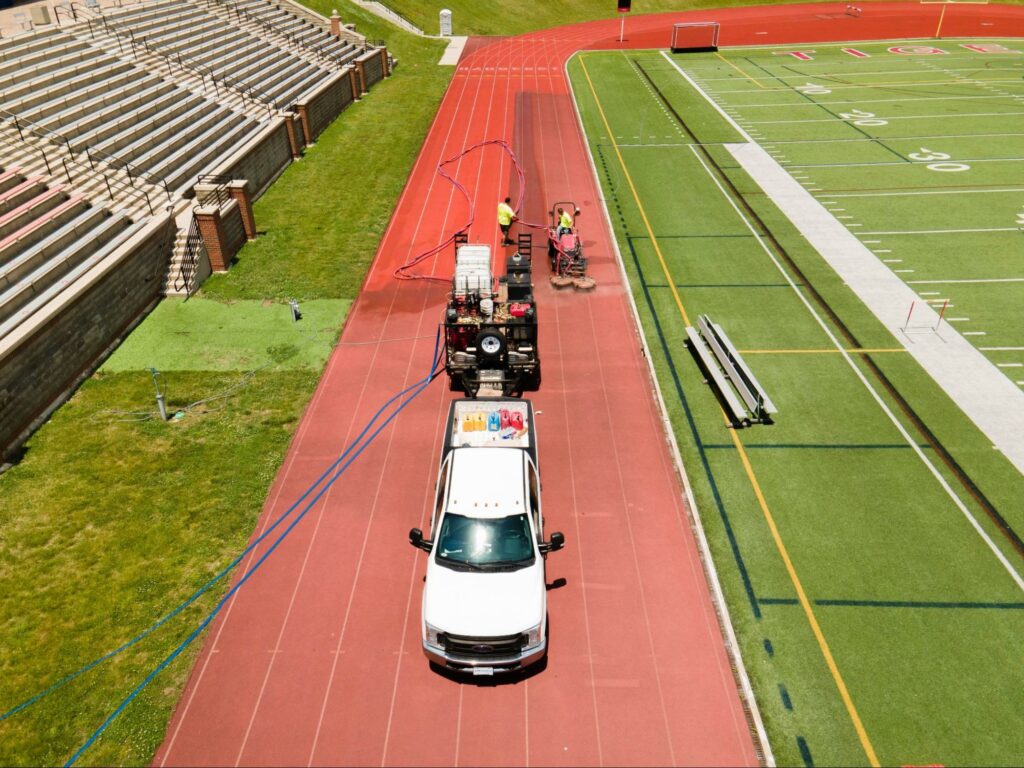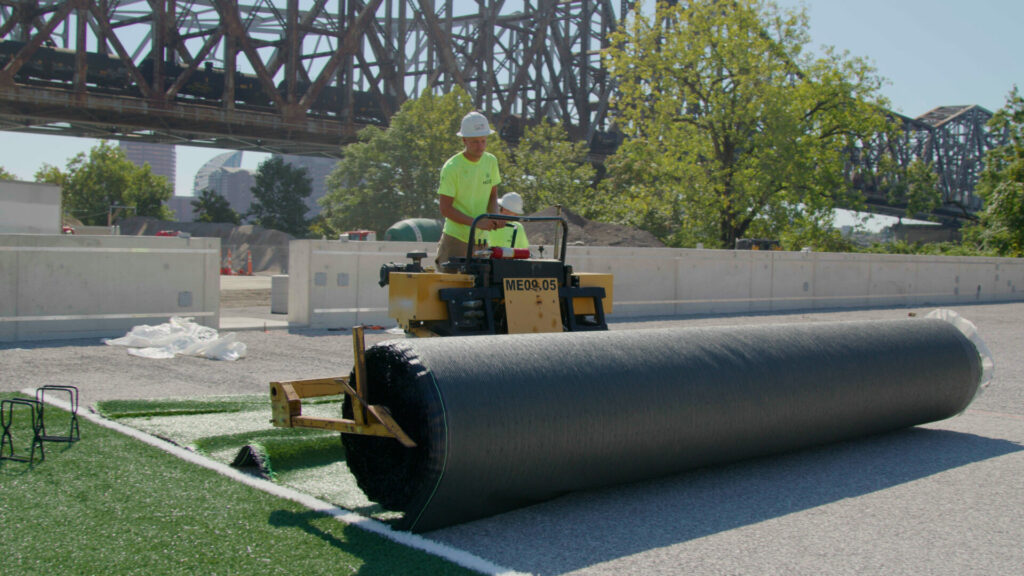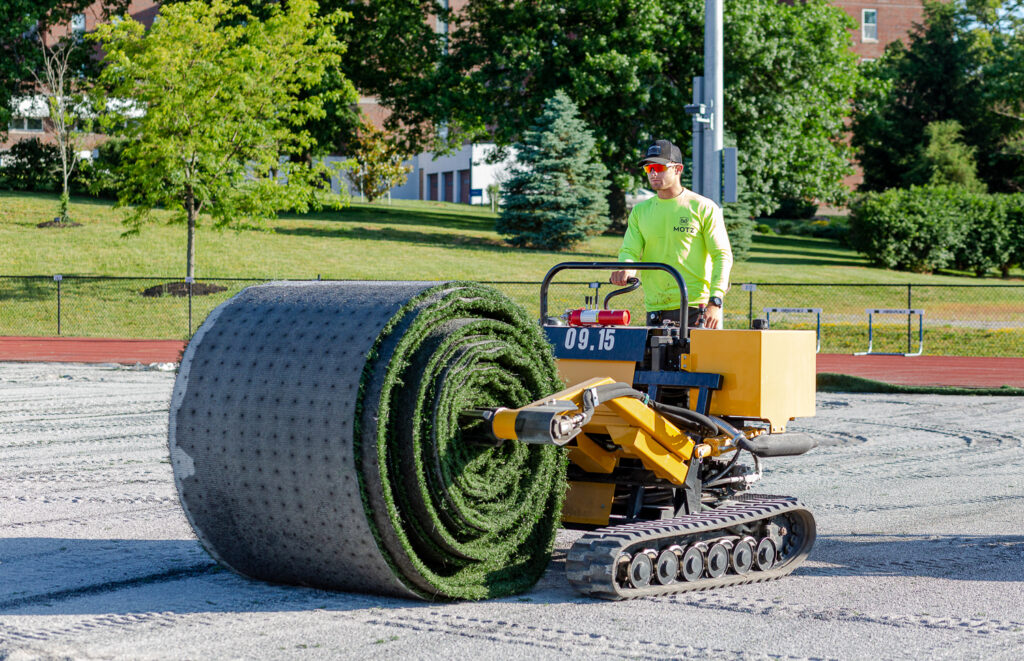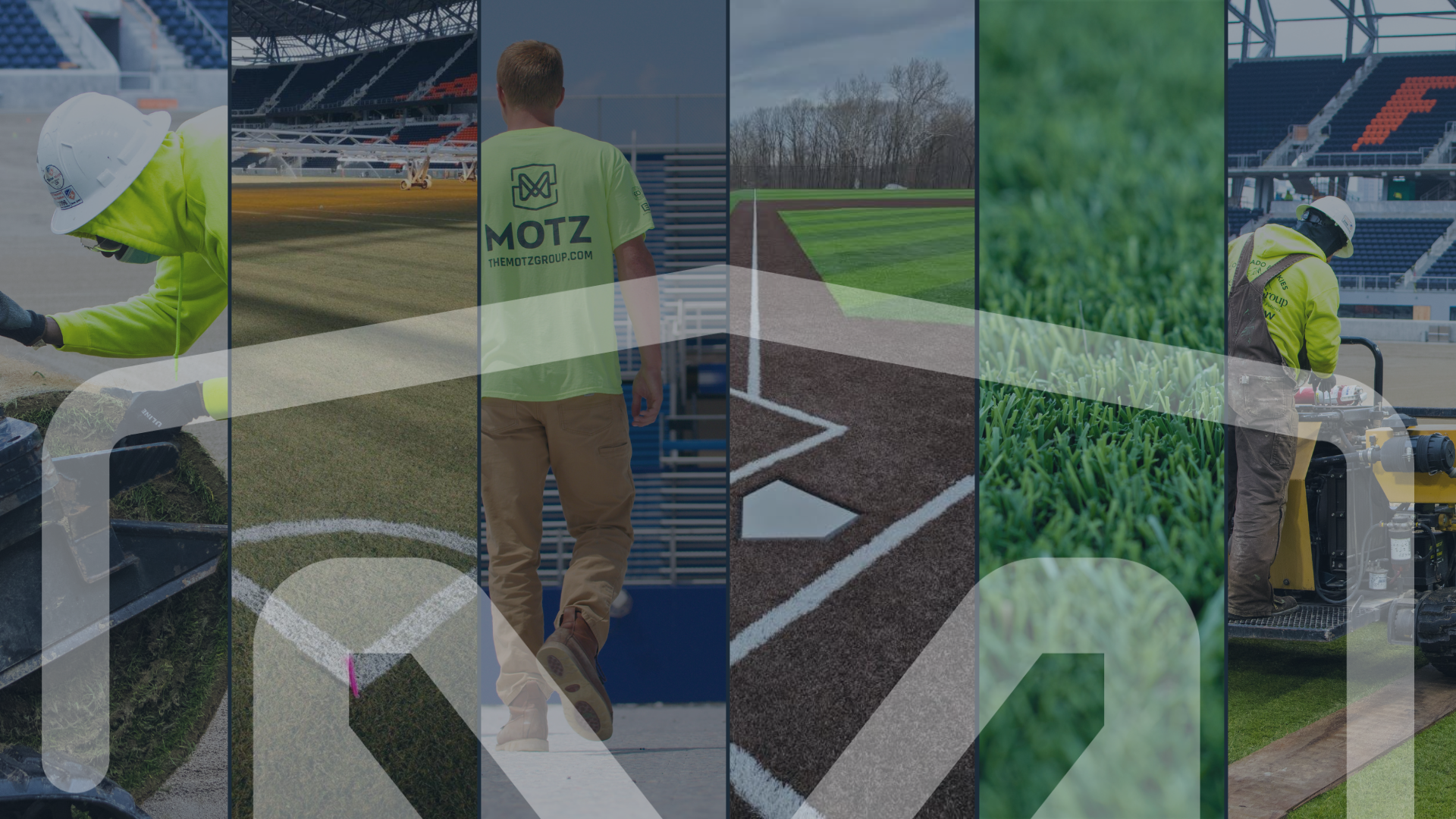
Sports Field Blog
Subscribe To Email Updates
Subscribe to our weekly newsletter and we’ll send updates straight to your inbox
Tips and Tricks for Synthetic Turf Sports Field Maintenance
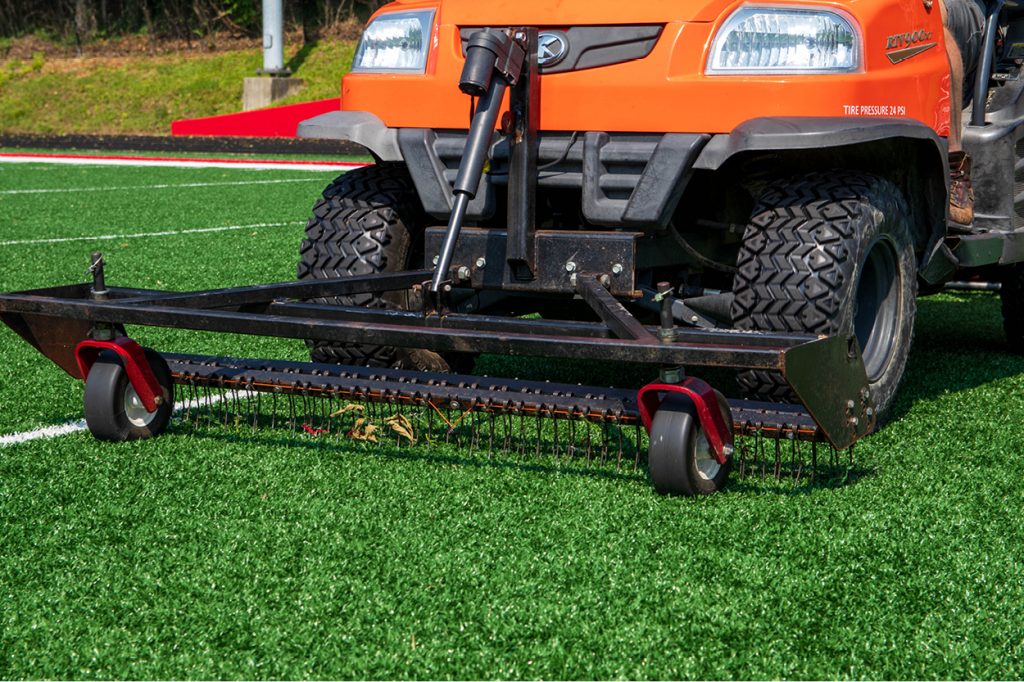
Synthetic turf sports fields are loved by athletic directors across the United States because they offer consistency and excellence in performance while being durable and easy to maintain.
A great (and easily implemented) maintenance regimen will extend the life of a synthetic turf sports field, especially when combined with an awareness of how every sport affects the field differently, particularly in areas that experience high traffic and heavy usage. Here are some tips and tricks for maintaining a synthetic athletic field.
4 Tips and Tricks for Maintaining a synthetic athletic field
Tip #1: Avoid metal spikes in cleats and athletic footwear on synthetic turf sports fields
Athletic footwear with metal spikes creates more wear and tear and can even be harmful to artificial turf sports fields. This is especially true with baseball; oftentimes players wear metal spikes on the mound, which causes it to get worn down quickly. Metal spikes lead to replacement and repair of the mound multiple times over the lifespan of the field. Use of metal cleats can void some warranties.
Tip #2: Understand how particular sports affect artificial turf sports fields
While every artificial turf sports field requires grooming and maintenance after every 40 hours of use, different sports impact synthetic turf in different ways. In addition to our standard maintenance guidelines, we recommend that you become familiar with the usage patterns associated with each sport to increase the longevity of your field.
Baseball and softball
Monitor these highly-used parts of your baseball field that are more susceptible to wear and tear:
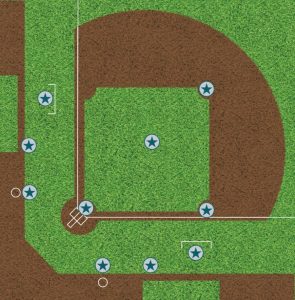
» Batter’s box
» Catcher’s box
» Umpire’s box
» First base area
» Second base slide area
» Third base slide area
» Pitcher’s mound
» On-deck circles
» Dugout entrance
» Coach’s box
A note about the mound
As discussed above, the mound is prone to wear and tear, especially if athletes wear metal spikes. Sometimes schools like to have a synthetic infield, but a natural mound made of clay. We recommend having a synthetic turf mound to avoid weather-related shifting and displacement. It’s an issue that wreaks havoc on the turf system, because clay becomes embedded in the turf infill, creating a mess that’s difficult to clean. Featured below, are 2 examples of the result you can expect to see when installing a natural mound and/or natural base path with a synthetic turf field infield.
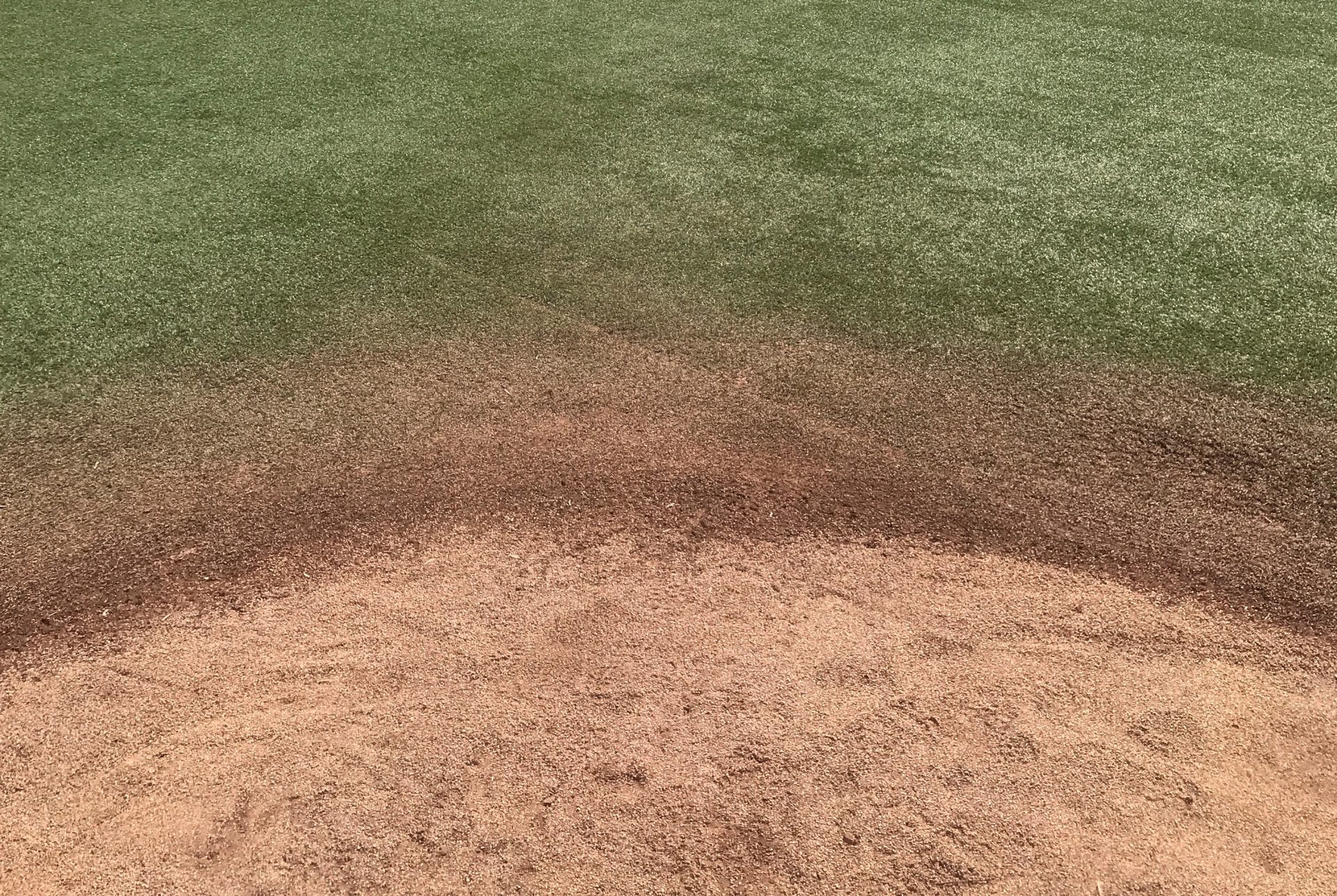
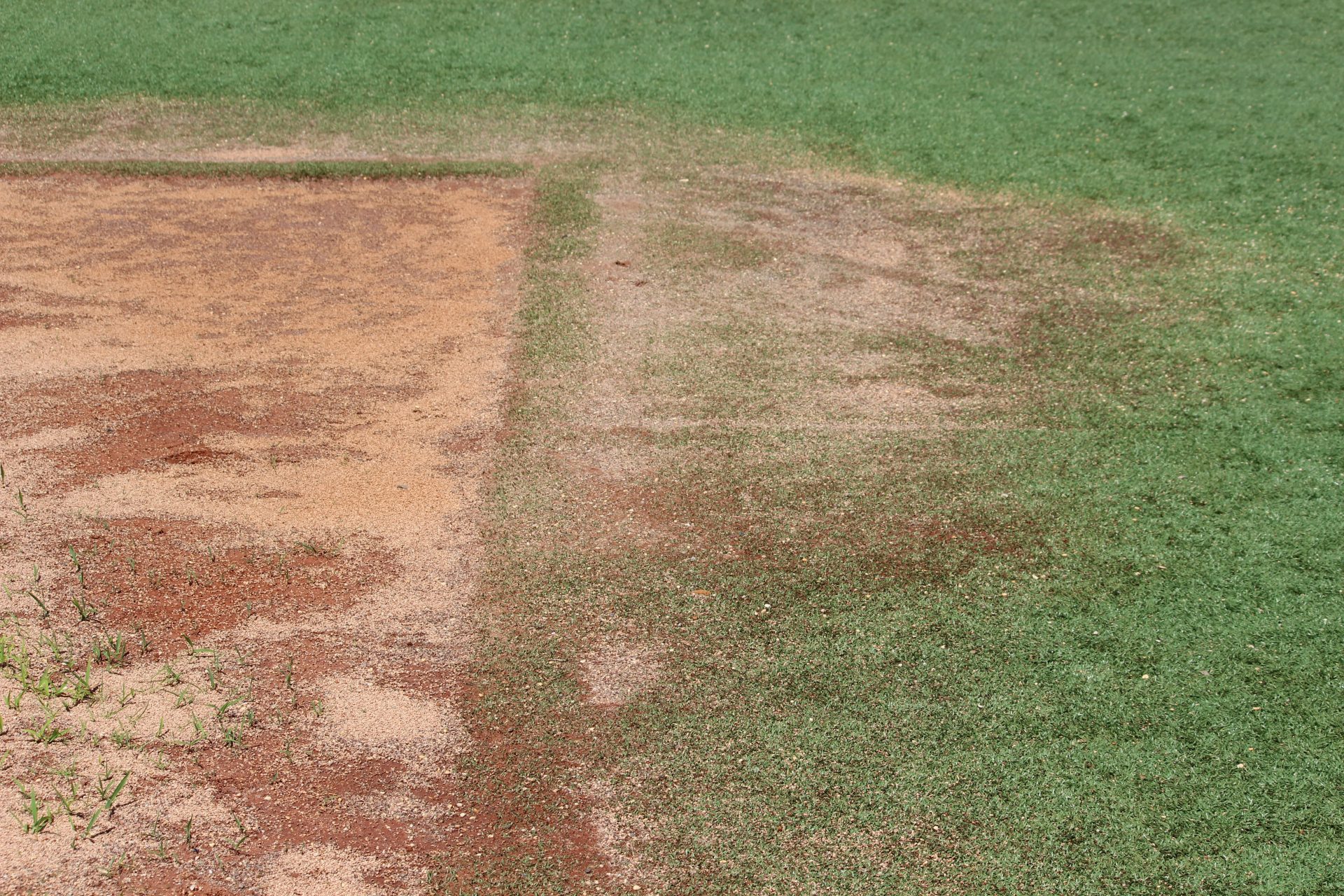
Choosing a synthetic mound increases the longevity of your field. We recommend keeping an eye on your infill levels in this area before games since it is a heavily trafficked area and may require infill levels to be topped off more frequently than other parts of the field. To cut down on infill maintenance and replacement, install a denser, lower-maintenance turf infill like Envirofill. Areas on baseball fields with heavy sand infill do not wear down as quickly because they use a high-density infill. The sand weight adds to the bulk density and keeps infill in place better than other infills that have a low bulk density.
Football
Pay special attention to the following specific areas of your football field, which may require additional attention due to high traffic:
» Extra point kicking location
» Team sideline areas
» Entrance from field house
» Between the hash marks
» Kick “X”s
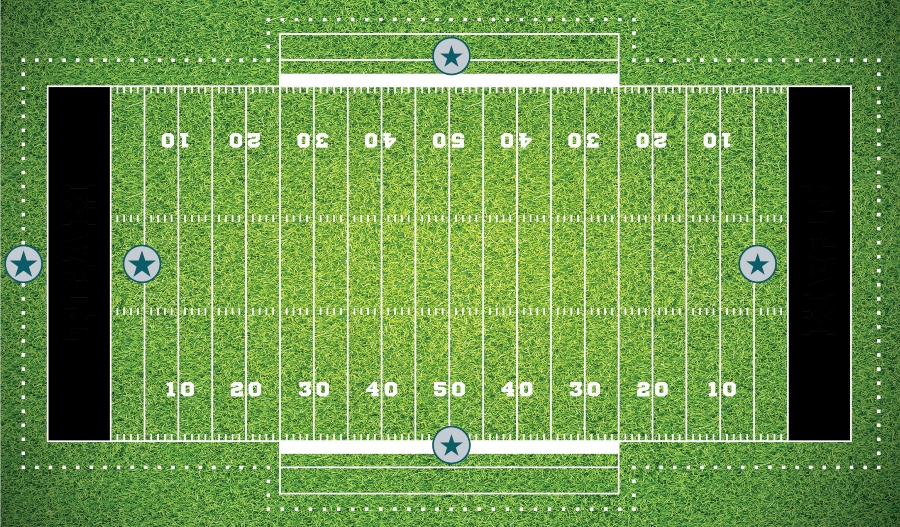
Soccer and lacrosse
For soccer, lacrosse, and field hockey, these are the “hot spots” that experience higher traffic due to the nature of these games and thus may require more care:
» Penalty spot
» Corner kick
» Goal mouth
» Center circle
» Entrance from field house
» Linesman paths
»Face-off location
Infill Maintenance – Soccer and lacrosse
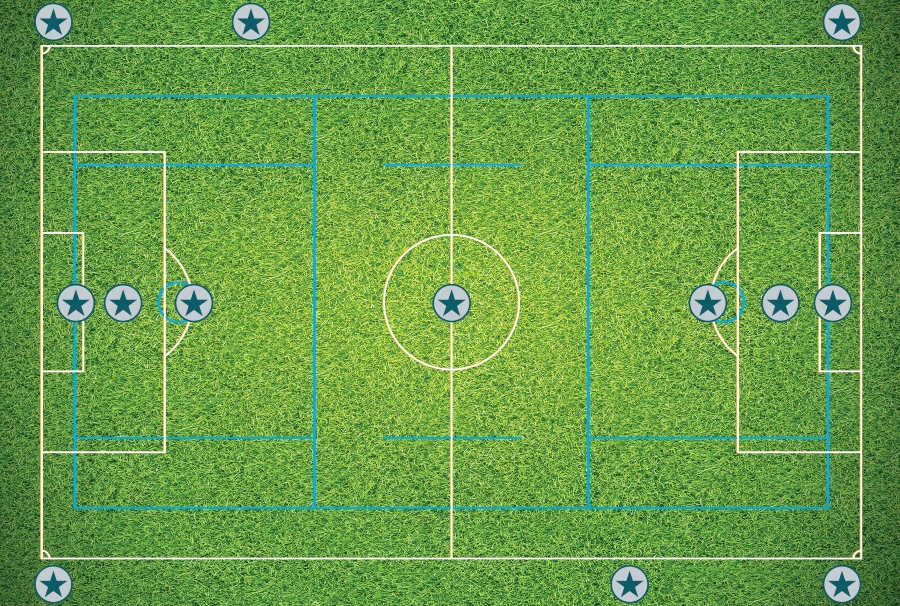
Tip #3: Follow the rules of the field
Some rules aren’t meant to be broken! Train your coaches, athletes, facilities managers, and students on the proper use of your synthetic turf sports field.
Avoid potential damage by prohibiting chewing gum, food (especially seeds), soda, all forms of tobacco use, shoes with metal spikes, and sharp objects.
Make sure that your staff and coaches rotate activities and practice stations on the field, alternate which gates are open so that traffic flow is evenly distributed, and lock facilities up when not in use.
Does your maintenance team understand the best practices for general maintenance? Ensure that they’re cleaning and grooming the field regularly. You might consider enlisting turf experts to train your team, or invest in an annual deep clean that will bring your field back to life, make it more vibrant, and increase its longevity.
Tip #4: Take extra care of artificial turf sports fields in years 1 and 2
Maintain turf infill levels meticulously during the first 2 years after installation. At the start of the life of a field, the turf fibers stand straight up, which exposes the infill, makes it easier for infill to be displaced and means the entire system is more prone to damage from cleats, foot traffic and UV exposure from the sun. In its third year, turf fibers depending on the turf fiber type installed in your system (Slit-film or Dual fiber) are likely to have completed the cross-hatching process that positions the fibers horizontally and weaves them together, thereby increasing the protection of the entire turf system.
Bonus tip: Know your warranty
Find out what is covered with your chosen system, installer, and products. Your maintenance team can then develop the best field protocol accordingly.
How does turf infill affect synthetic turf field maintenance?
Maintain the infill depth levels at all locations to increase the performance, lifespan, and durability of your sports field. If the artificial turf isn’t protected with optimal levels of infill, it can be torn and damaged faster than normal. If proper infill depths are not maintained especially at key areas across the field, there is risk to exposing the turf backing which can result in turf failure. Inconsistent infill depths also creates inconsistent performance across the field. Paying regular attention to your infill can go a long way in maximizing the life of your field.
Choosing a high-quality alternative infill means less maintenance and displacement. Both Envirofill and Safeshell have a higher bulk density, meaning they are heavier and don’t shift as much as other infills.
Ready to level up your sports fields? Talk to the Motz team to get the ball rolling today!
Similar Blogs
